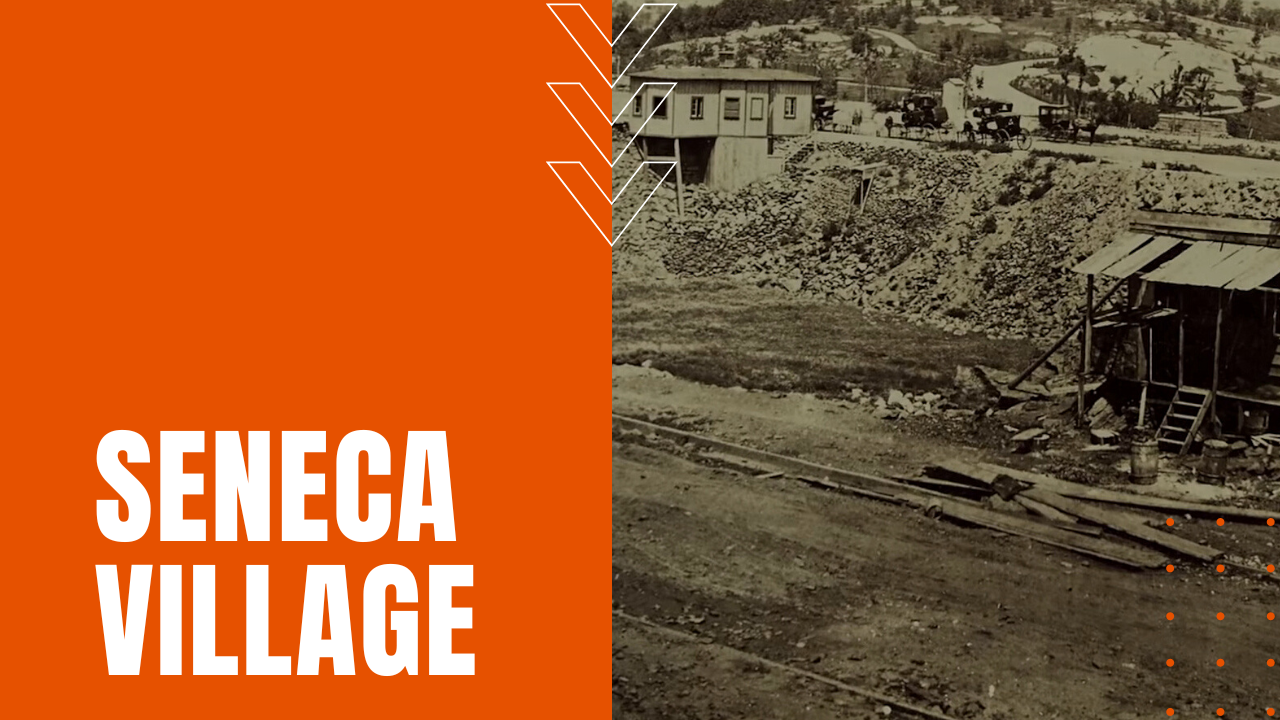Seneca Village

In 1825, after John and Elizabeth Whitehead subdivided their land into 200 lots for sale, predominantly African American buyers established Seneca Village, far removed from the filth, crime and bustle of greater New York City.
Flourishing Community
As the community grew over its 32-year existence, by the mid-1850s, Seneca Village was made up of 50 homes, three churches, a cemetery and a school for African American students. By 1855, the village boasted over 225 residents—roughly two-thirds African American, one-third Irish and a handful of Germans—and while slavery in the state of New York was outlawed in 1827, Seneca Village allowed African Americans to live in an autonomous community, far removed from the still-prevalent racial discrimination harbored by the majority of white New Yorkers of the day.
Breathing Room in a Crowded City
During a time when immigrants lived in densely-packed tenement squalor, many residents in Seneca Village lived in large two-story homes, while records indicate that most villagers were employed in some of the top jobs then available to African Americans, while still other records indicate that most Seneca Village children attended school. Black residents at Seneca Village proved to be more stable and prosperous than many other Blacks living in Manhattan, many owning property worth $250 or more, which along with a history of three years of stable residency earned them the right to vote.
Home to Rare Voting Blacks
By 1845, of the 100 Black New Yorkers eligible to vote, 10 lived in Seneca Village. During the early 1850s, however, city planners had their eye on the creation of a 775-acre park in central Manhattan, from 59th Street to 106th, and when the plan was enacted into law in 1853—creating the nation’s first major public park—the city acquired Seneca Village and the surrounding parklands by eminent domain, which allows local governments to seize private land for public use, effectively displacing 1,600 inhabitants for the creation of Central Park. By 1857, all residents of Seneca Village had been displaced to new locations within the New York City metro area, including many to Sandy Ground in Staten Island or Skunk Hollow in New Jersey, making Seneca Village, a bygone oasis in one of the busiest cities on earth.
